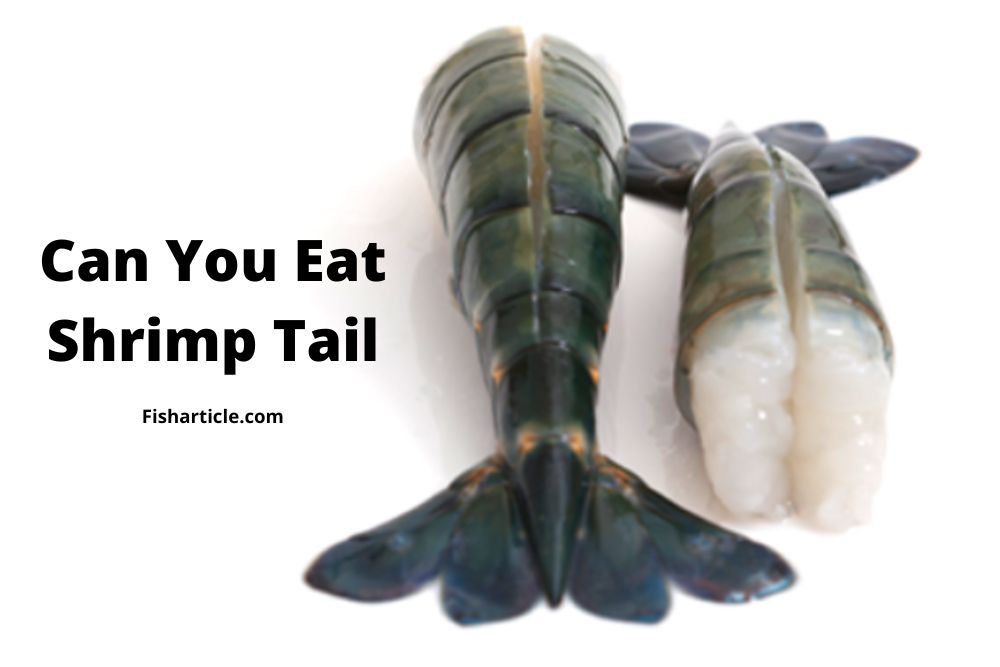Shrimp tails are edible and can be eaten as a snack or in a meal. They are a good source of protein and are low in calories. Shrimp tails can be cooked in a variety of ways, so they are a versatile food choice.
Shrimp tails can be eaten boiled, grilled, or fried. They make a delicious addition to any meal.

Are Shrimp Tails Edible or Is it Safe to Eat Shrimp Tails?
Many people are unsure whether or not shrimp tails are edible. The truth is, they are definitely edible.
Yes, shrimp tails are edible and you can eat it without any hesitation. While the shells may not be the most appetizing part of the shrimp, the meat inside is definitely consumable.
In fact, many people consider tail meat to be the most delicious and tender part of the shrimp. If you’re looking for a tasty and healthy seafood snack, give shrimp tails a try.
Shrimp tails can be eaten raw or cooked. They are a great addition to salads, cocktails, and other dishes. They are also a popular ingredient in sushi rolls.
Chitin, a hard and brittle substance also found in many fish species and insects, makes up shrimp tails. It is comparable to the cartilage found in chickens. In humans, the shrimp tail is very easily digested.
There are numerous flavoring ingredients in it. This means that maintaining it while the shrimp is being cooked helps to lock in the flavor from the entire shrimp, ensuring that none of the delicious goodness can escape from the end before others get a chance to enjoy it.
Shrimp tails are rich in dietary calcium; however, they have a handful of calories per serving. The edible shrimp tail has certain health benefits; thus, it is worth it despite the harsh texture and experience of chewing through it.
Additionally, they contain keratin-related proteins. It is not necessarily dangerous to eat these tails. However, you might as well forgo their nutritious worth if you have an allergy to them.
Shrimp tails are safe for pregnant women to eat since they contain less mercury than other types of seafood, according to the Food and Drug Administration (FDA).
The method of preparing shrimp tails is the main safety concern. A dish made with poorly prepared shrimp tails may not be the healthiest.
Nutrition in Shrimp Tail
Shrimp tails are also low in calories and fat, making them a healthy option for those looking for a nutritious meal.
The shrimp tail is a nutritional powerhouse. It is low in calories and high in protein, making it an ideal food for those looking to stay fit and healthy.
They are also a good source of selenium, an antioxidant mineral that helps protect the body from oxidative damage. So next time you’re cooking up some shrimp, don’t forget to save the tails.
How To Remove Shrimp Tails
Removing the shrimp tails can be a little tricky, but once you get the hang of it, it’s easy. Here are a few tips to make the process go smoothly:
- Use kitchen scissors to cut off the top of the shrimp’s shell. Be careful not to cut into the meat.
- Turn the shrimp so that the tail is facing you and use your fingers to pry open the tail.
- Use a knife to cut through the tail meat and remove it from the shell.
- Discard the tail or save it for another recipe.
Final Words
In conclusion, yes, shrimp tails are edible. They are a great source of protein and other nutrients, and they can be cooked in a variety of ways. So next time you’re cooking up some delicious shrimp, don’t forget to save the tail.
